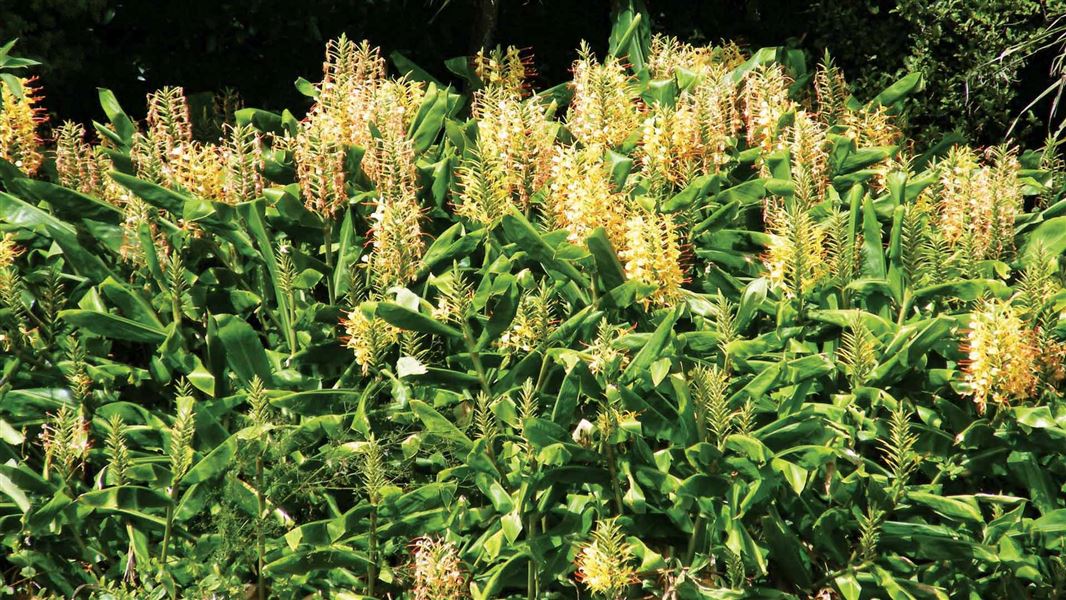Weeds come in all sizes, shapes and growth forms, and are found everywhere, not just in your garden. Different types of weeds have different impacts. For example:
- wilding pines – trees drop seeds that quickly take over open ground to grow pine forests
- Chilean rhubarb – forms large clumps that shade out native plants
- old man's beard – a vine that smothers native plants.
By identifying a weed you'll find out the impact it will have on its environment.
Weed identification guides
Like any plant, different weeds are identified by their characteristics. Plant identification guides can be used to help identify which weed you are dealing with. Once you know what it is, you can easily find out how to control it.
Use these websites to identify and learn more about different weeds:
- Weed information - Weedbusters website
Search from a list of over 100 weeds. - Weed identification key - Landcare Research website
The key helps identify over 650 weeds. - Exotic plants - NZ Plant Conservation Network website
Search for an exotic plant from a list of over 2,500 naturalised plants. - Marine Biosecurity Porthole - NIWA
Information on unwanted marine pests - Marine pest identification guide - MPI
Types of weeds
The weeds you identify are likely to be one of these types.
Trees and shrubs (woody plants)
Weeds that are trees or shrubs overtop or replace other plants and alter the composition of native plant communities, often preventing native plant regeneration.
Common trees considered weeds include: wattles, willows, tree privet and wilding pines. Common weeds that are shrubs include: barberry, gorse, heather, broom and buddleja.
Herbs (non-woody plants)
Herbs or perennials are non-woody plants. They can overtop small plants, crowding out native plants and preventing the regeneration of native seedlings.
Examples include: wandering willie, chilean rhubarb, wild ginger and pampas grass. They can also occur in aquatic habitats eg, oxygen weed that grows in lakes.
Vines
Vines climb and scramble, smothering trees and forest canopies.
Ivy, old man’s beard, Japanese honeysuckle, climbing spindleberry, mothplant and banana passionfruit are all problem weed vines in New Zealand.
